
Of Anatomy, Aesthetic, Discipline, and True Talent: Why We Admire Mr. Bn Vichar’s Body of Work
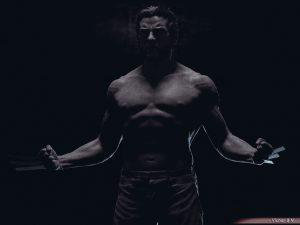 Saying that Mr. Bn Vichar’s works are impressive is an understatement.
Saying that Mr. Bn Vichar’s works are impressive is an understatement.
His pieces are genuine works of art. His regard for human anatomy exhibits a certain wisdom that resonate the discipline of masters in the old arts. The aesthetic, the form, and the over-all details configure into the kind of potential that digital artists of today can attain. Mr. Vichar’s Greco-Roman influence exudes not only the provenance of his style but also, (dominantly even) of his true talent. And for this, we are awestruck of his pieces.
Also worthy of note is his sense of narrative. Mr. Vichar knows that each piece should be evident of an undisclosed narrative. In this light, he does underestimate his spectators; he recognizes that the most effective way to narrate a story is to show, not tell.
Mr. Bn Vichar knows what an artist of his penchant should capitalize in. His uncompromising attitude for the art—as seen through his pursuit of higher education—is an attitude that each artist of his time and craft should adopt.
So let’s all take the time to read through Xeno Creatives’ interview with Mr. Bn Vichar and get to know what makes artists of his caliber tick.
Xeno Creatives (XC): Needless to say, ZBrush innovated the 3D industry. What was it like using it for the first time? What did you have to learn to be skilled in it?
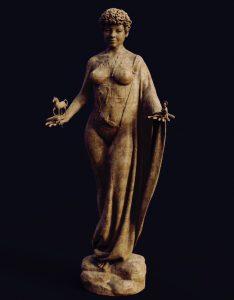 Bn Vichar (BV): ZBrush has definitely changed the landscape of the 3D industry. I followed Zbrush for a while before actually using it. At that time, I was working intensively using Maya, 3Ds Max and other workflows-none matched the allure. The interesting stuff being done using ZBrush versions 1 and 2 was very enticing. I decided to get my hands on this new amazing software. This first thing that hit me was the difference between ZBrush and the other software, that I had been using all this while, was the ease to adapt. It was really a mind-blowing first impression. My background is that of a traditional sculptor, so my main motive was just to master the tool. I still feel I have only scratched the surface of ZBrush.
Bn Vichar (BV): ZBrush has definitely changed the landscape of the 3D industry. I followed Zbrush for a while before actually using it. At that time, I was working intensively using Maya, 3Ds Max and other workflows-none matched the allure. The interesting stuff being done using ZBrush versions 1 and 2 was very enticing. I decided to get my hands on this new amazing software. This first thing that hit me was the difference between ZBrush and the other software, that I had been using all this while, was the ease to adapt. It was really a mind-blowing first impression. My background is that of a traditional sculptor, so my main motive was just to master the tool. I still feel I have only scratched the surface of ZBrush.
XC: How does ZBrush help you become more efficient and better at your craft?
BV: The most striking attribute of ZBrush is its versatility and ease of creating any design in 3D before executing it in “real world” Benefits like being able to try out different poses and play with proportions while telling a story amount to new levels of freedom in the medium. With ZBrush these possibilities the process takes minutes as compared to the days I spent on them earlier. To have the ZBrush model printed out and be able to see it at the scale you need, takes all the guesswork out and directs you exactly where you need to go next.
I have worked for years in the world of animation and video games. The most common problem that we encounter is that designs could work well in 2D but not in 3D, or vice versa. With ZBrush you can design directly in 3D. This has broken down many barriers. It represents tremendous savings in time of creative productions.
XC: When did you know that you’ll be using ZBrush as your main software to create 3D art in the long run?
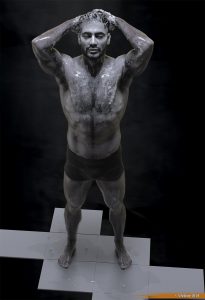 BV: Once I started using Zbrush (10 years ago), it didn’t take me long to make this decision. The process of passing my knowledge of sculpting to the program was a natural process. As an artist, nothing fuels my creativity like freedom and simplicity. ZBrush caters to both.
BV: Once I started using Zbrush (10 years ago), it didn’t take me long to make this decision. The process of passing my knowledge of sculpting to the program was a natural process. As an artist, nothing fuels my creativity like freedom and simplicity. ZBrush caters to both.
XC: What were the other media that you explored before ZBrush? Did these ultimately help you in making your creations better while using ZBrush?
BV: Having realized my interest in art in the early years, I did my masters in sculpting. During this time, I had the privilege to work as a personal sculptor for the king of Mysore. In the initial years of my career, being a traditional sculptor, my main medium was clay/rock/wood. I moved to the CG world in 2005, and was introduced to ZBrush . Over the years I worked with clay .
I would say exposure to these mediums did help make my creations better while using ZBrush. The understanding of the limitations of each of these mediums made me look at ZBrush for solution to solve those drawbacks.
XC: How is the knowledge in human anatomy important when working with ZBrush?
BV: Art and the science of anatomy are inseparable in many instances. You cannot be a good artist without knowing about anatomy. The great masters of past ages knew the importance of anatomical knowledge, and their grasp of human anatomy is reflected in the quality of their masterpieces.
I believe that one of the most important aspects of learning anatomy is to study as much as you could about the bones and muscle groups before sculpting a fully formed body part. Understanding the organization and mechanics beneath the skin makes the sculpting less of a guessing game and improves the efficiency and confidence as an artist while sculpting in ZBrush.
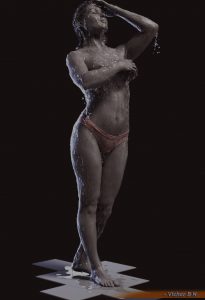 XC: Do you see yourself working in the movie and television industry?
XC: Do you see yourself working in the movie and television industry?
BV: I have worked on DVD movies and in television industry and I would absolutely love to work on VFX films in future. This is one area that I have not explored much so far.
XC: Was delving into the craft really a passion to begin with or a mere necessity?
BV: The craving to learn new things sparked in me the fascination towards CG. The idea of bringing your sculptures to life through technology is very alluring; it’s almost like playing God. I believe and try to follow the saying, “never get so busy making a living that you forget to make a life.” And life for an artist is nothing but art.
I try to create personal projects every now and then, spending 2 to 3 hours every day learning and working on my skills. It helps to track the self-progress and makes me aware of areas of improvement and motivates me to push further.
XC: Your works over at ArtStation and Facebook are AMAZING. They are reminiscent of traditional and Classic sculptures in the Greek and Roman traditions, and boy, are they such marvels! But we gotta ask, do you have any favorite pieces? What are they and why?
BV: Thank you !!! I do have great influence of Greco-Roman sculpture in my sculpting style.
All my works are like my babies and a parent can never pick a favorite. Works of art often tell stories. I believe, a good and well-presented sculpt is successful in reaching its objective and remembered long after over others. Holding the interest and crossing all age barriers is the impact of effective storytelling.
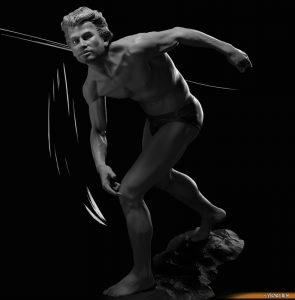 Knowing and applying the art of storytelling will not only strengthen your sculpting, but also develop the desired interest in the audience.
Knowing and applying the art of storytelling will not only strengthen your sculpting, but also develop the desired interest in the audience.
Narrative works often illustrate well-known historical, religious, legendary, or mythic stories. However, great masters invent their own stories, leaving the viewer to imagine the narrative.
XC: What are the other concepts that you would want to create?
BV: My sculpts and concepts usually tell a story and message that resonates with everyone and helps co-relate. Currently, I am working on a sculpt called “ego”. I also tend to lean towards super heroes and creatures for my sculpts.
XC: Whom do you consider your influences? Why do you look up to them?
BV: I have been very lucky to have immense exposure to great artists and masters. Each one has influenced me in their own way, through their body of work, techniques, inspiring metaphors and most importantly subject matter. It’s difficult to name one but the ZBrush masters in today’s time are very inspiring as well.
XC: Do you also see yourself in Game Character Design?
BV: Given my inclination towards creature and anatomy, I guess Game Character Design is a natural fit. It’s on my wishlist.
XC: If you weren’t a 3D artist today, what do you think you’d be specializing in?
BV: I would still have been a sculptor. I would have pursued my career in traditional sculpting.
XC: What advice or message can you give young aspirants wanting to enter the craft/industry?
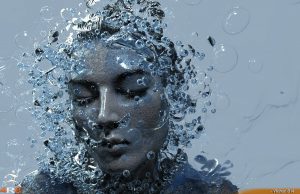 BV: I cannot emphasize enough that if you want to be a digital sculptor you will have to learn anatomy and movement. In ZBrush, you will then be able to make the same things using different methods.
BV: I cannot emphasize enough that if you want to be a digital sculptor you will have to learn anatomy and movement. In ZBrush, you will then be able to make the same things using different methods.
Sculpting is dependent on capturing form and proportions to produce good likeness. It is important to have a good photograph reference of the subject. When you make a change in one area, check how that change has affected other areas of the sculpture. Continuously compare the sculpture to the reference materials.
Creating unique figurative sculptures that are appealing and that engage the viewer requires a fundamental knowledge of anatomy, form, proportions, gesture, and emotion. An important but often overlooked aspect of form is the negative space. Negative space is the space around and between a part of the subject or even the entire subject.
Thank you Mr. Bn Vichar for giving us your time for this interview. We have truly gained much from your wisdom in the digital arts. Indeed, the likes of you should mentor those whose interests lie in the arts. We are definitely looking forward to more of your works.
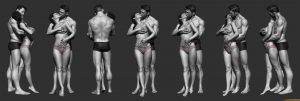
Want to see more of Mr. Bn Vichar’s works? Click here!

